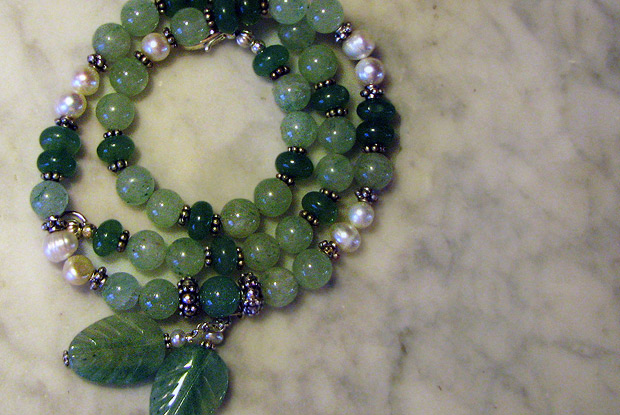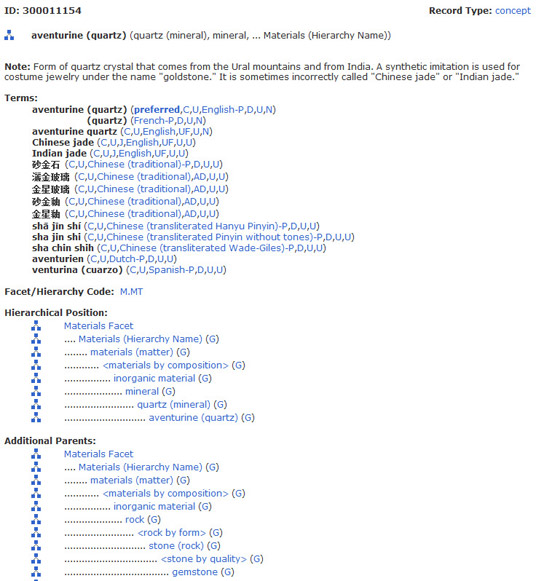
Necklace featuring 砂金石 (shā jīn shí), also known as venturina and aventurien
The big news in the Getty Vocabulary Program is that around 3,150 records in the Art & Architecture Thesaurus with one or more Chinese-language equivalent terms, plus descriptive notes and bibliographic citations in Chinese, are now published online. The Art & Architecture Thesaurus (AAT), available free online, is a standard reference of over 250,000 terms for art, architecture, and conservation.
The ongoing full translation of around 35,000 AAT records into Chinese is being undertaken by the Taiwan E-Learning & Digital Archives Program (Academia Sinica in Nankang, Taiwan) in close consultation with the Vocabulary Program editors. We are very grateful to the contributors and their translators, the Vocabulary editors, and as always to our colleagues in Information Technology Services for their tireless work in developing systems to load and edit contributed data.
The Chinese terms are the most recent addition to the ever-growing multilinguality of the Getty Vocabularies, developed in partnership with many contributors around the world. For example, existing and evolving translations of the AAT in Spanish and Dutch have already been done by the Centro de Documentación de Bienes Patrimoniales (Dirección de Bibliotecas, Archivos y Museos in Santiago, Chile) and the Bureau AAT, RKD (Netherlands Institute for Art History in The Hague, The Netherlands). Partial translations in Italian and French are completed; translations in German and other languages are anticipated. Our other vocabularies, the Union List of Artists Names (ULAN), the Getty Thesaurus of Geographic Names (TGN), and the Cultural Objects Name Authority are also multilingual, and they include historical names too.
Especially given the challenges of differing traditions and cultures, scripts and writing methods, this first set of translations in Chinese is a particularly gratifying accomplishment. The issues surrounding the gathering, processing, and editing of terms in various languages from many contributors makes work in the Vocabulary Program always interesting. It is satisfying to know that these terms are used worldwide to aid in the cataloging and retrieval of information about art, architecture, and conservation.





Comments on this post are now closed.